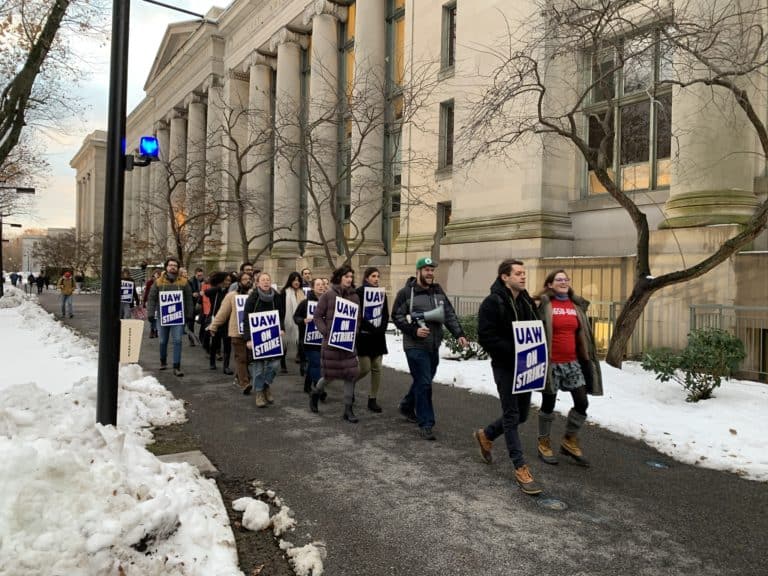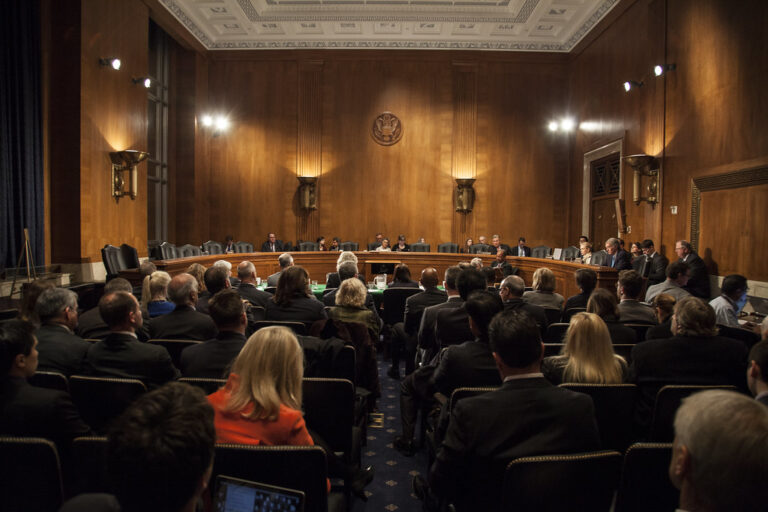
Riva Han is a student at Harvard Law School and a member of the Labor and Employment Lab.
A bachelor’s degree is the most reliable pathway into the middle class. Over a lifetime, college-educated workers typically earn $1.2 million more than those with only a high school diploma. Yet faith in higher education is faltering while student debt has skyrocketed to a record $1.7 trillion.
This crisis of confidence in higher education has fueled bipartisan interest in career and technical education (CTE) as a practical solution. In 2023, 47 states passed career-education laws aimed at strengthening school-to-work pathways. In 2024, governors in 36 states named workforce readiness as a top policy priority in their State of the State addresses.
The National Center for Education Statistics defines CTE as high school courses and post-secondary programs below a bachelor’s degree that teach the skills and knowledge required for specific fields or careers. Nationwide, over 90% of public high schools offer CTE, and more than one in five students take four or more CTE courses before graduation. Many states have expanded dual enrollment options, increased funding, and established industry advisory boards to shape CTE curriculum.
Despite this widespread enthusiasm, partisan visions for CTE fail to center student interests, and rigorous research on outcomes is lacking. The right often frames CTE as a means to undermine “woke” academic institutions by bypassing college entirely. Conservative proposals emphasize employer control, deregulation, and reduced government oversight. Democrats seek to broaden equitable access to CTE, but have not meaningfully addressed the stigma that careers in the trades are for “less capable” students. Most state data systems are not equipped to track CTE’s impact on employment outcomes, and surveys often suffer from low response rates and sampling bias. The wide variation in CTE programs by state and district only compounds these challenges. What little data exists is ambiguous: for example, students who start but do not complete credentials at for-profit institutions see their earnings decline by 9%.
The Long Shadow of Vocational Education
For much of U.S. history, vocational education was used as a tool for racial and class stratification. Immigrants, low-income youth, and students of color were disproportionately tracked into low-level vocational programs regarded as “dumping grounds” for those deemed incapable of academic success. Echoes of this history persist today.
At least 12 states now allow CTE courses to substitute for core subjects like math and science. In Alabama, students on the workforce diploma track are not required to take the three math credits needed for admission to many four-year universities, including the state’s flagship University of Alabama. With 405 students assigned to a single guidance counselor, those steered into the workforce diploma track may not be fully informed of the long-term consequences. Even more troublingly, ACT scores from workforce diploma students are excluded from public reporting, creating a perverse incentive to push lower-performing students into the program.
Parents have voiced concerns that CTE can lock students into rigid, corporatized career tracks rather than empowering students with adaptable skills. In Virginia, Sara Ward described how her son, formerly part of a gifted and talented program, was steered into a Ford Motor Company sponsored curriculum with “no way to opt out.” Instead of exploring advanced math concepts, his courses focused narrowly on applied math including manufacturing and accounting. “I want my child to decide how he’s going to use math, not to be told what to do with math,” Ward said. She ultimately pulled her son out of the public school system entirely. Virginia’s broader education policy raises similar alarm bells: as part of its successful bid for Amazon’s new headquarters, the state pledged more than $1.1 billion to expand a “tech-talent pipeline” beginning in K-12 schools. “We do want our kids to have technology skills that give them a strong resumé when they come out of school,” one middle school teacher said, “but there is zero reason that we can’t have educators writing and creating that curriculum as opposed to corporations.”
At its worst, CTE can be downright dangerous. In Washington state, 16-year-old Derrik lost both his legs in a gruesome accident while participating in a school-based work program at a construction company. Assigned to operate heavy machinery in violation of state law, Derrick was one of multiple students the company had unlawfully placed in hazardous roles. Investigators found that in just one year, the company had assigned seven minors to operate or work near dangerous machinery at least 35 times. The company also overworked students, assigning a 14-year-old to more than 40 hours a week and scheduling shifts during school hours. Oversight failures abounded: the school district failed to inspect the job site, and state and local authorities disputed who was responsible for ensuring student safety.
The Potential for Brighter Horizons
But CTE has the potential to broaden students’ horizons rather than narrow them. When designed well, programs can equip students with real-world skills while keeping open doors to college and long-term career mobility. California’s Climate Action Pathways for Schools (CAPS) is a standout example. Created by a local solar engineer, CAPS prepares high school students for careers in sustainability and environmental technology. CAPS students train for paid internships where they help schools lower their carbon footprints, support electric bus infrastructure, and educate peers about climate change and sustainability. Similar programs in Missouri, Illinois, Maine, Mississippi, and New York City point toward a more people-centered vision for CTE rooted in community engagement and social purpose rather than just employer demand.
In Massachusetts, state-approved CTE programs must ensure that students are prepared to enter advanced employment opportunities after high school and to pursue post-secondary education if they so choose. The state currently recognizes 44 program areas in 11 career clusters, including Arts and Communication Services, Construction, Healthcare, and Engineering.
Colorado offers a promising regional model where nine rural districts partnered with higher education and business leaders to expand academic and career pathways. A nonprofit formed by the districts conducts job market analyses and surveys students about their interests. Counselors then use this data to provide tailored guidance that aligns both with workforce needs and student goals. Teachers collaborate across districts to share curriculum and industry-grade equipment. More than 60 employers in the region provide apprenticeships, job shadows and internships, helping some students earn credentials or job offers before graduating high school.
Reclaiming the Future of CTE
CTE is not inherently liberatory or exploitative—but it is political. Its design both reflects and determines who gains access to opportunity and whose knowledge and labor are valued. As student debt soars and trust in higher education erodes, CTE is increasingly being sold as the solution. But absent intentional design and rigorous oversight, it risks repeating historical patterns of exclusion and exploitation under a different name.
Students and workers deserve more than narrow job pipelines dictated by corporate interests. They deserve an education that equips them with the skills, resources, and power to create their futures and support the flourishing of all people.
The future of CTE is up for grabs. Labor organizers, educators, parents, and students must advocate not just for access to these programs, but for control over what they are designed to achieve. The battle over CTE is ultimately a battle over the kind of future we want to build.






Daily News & Commentary
Start your day with our roundup of the latest labor developments. See all
November 25
In today’s news and commentary, OSHA fines Taylor Foods, Santa Fe raises their living wage, and a date is set for a Senate committee to consider Trump’s NLRB nominee. OSHA has issued an approximately $1.1 million dollar fine to Taylor Farms New Jersey, a subsidiary of Taylor Fresh Foods, after identifying repeated and serious safety […]
November 24
Labor leaders criticize tariffs; White House cancels jobs report; and student organizers launch chaperone program for noncitizens.
November 23
Workers at the Southeastern Pennsylvania Transportation Authority vote to authorize a strike; Washington State legislators consider a bill empowering public employees to bargain over workplace AI implementation; and University of California workers engage in a two-day strike.
November 21
The “Big Three” record labels make a deal with an AI music streaming startup; 30 stores join the now week-old Starbucks Workers United strike; and the Mine Safety and Health Administration draws scrutiny over a recent worker death.
November 20
Law professors file brief in Slaughter; New York appeals court hears arguments about blog post firing; Senate committee delays consideration of NLRB nominee.
November 19
A federal judge blocks the Trump administration’s efforts to cancel the collective bargaining rights of workers at the U.S. Agency for Global Media; Representative Jared Golden secures 218 signatures for a bill that would repeal a Trump administration executive order stripping federal workers of their collective bargaining rights; and Dallas residents sue the City of Dallas in hopes of declaring hundreds of ordinances that ban bias against LGBTQ+ individuals void.